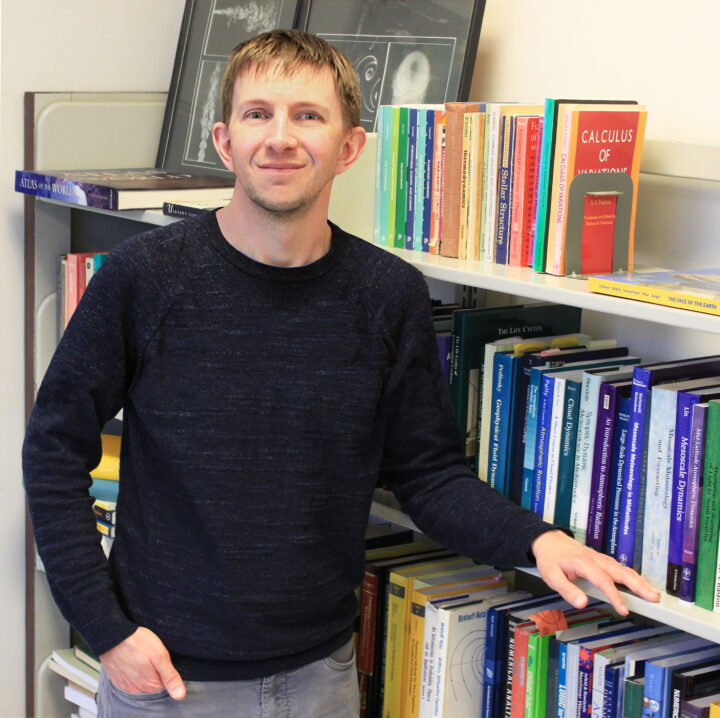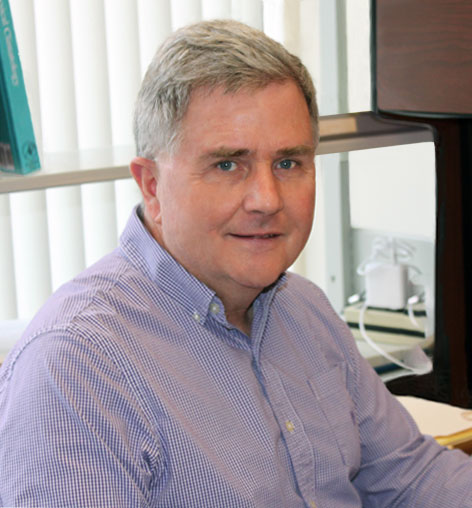April 6th, 2023
Operational models are the backbone of weather and climate prediction, allowing experts to make informed predictions about the weather a few days from now — or the climate several decades into the future.
But there’s another type of model that’s important to the forecasting process: experimental models. These models allow scientists to conduct research, test new theories, and make improvements to the modeling process, learning lessons that can ultimately be incorporated into operational models used by NOAA and NASA.
“Operations is an extremely challenging environment, with tough time constraints, specific end-user needs, and a need to get virtually everything right, and the work involved in just implementing and maintaining models in operations leaves little time for development of new ideas and applications,” said Lucas Harris, Deputy Division Leader, Weather and Climate Dynamics Division at NOAA GFDL.
In experimental modeling — unlike in operational modeling — “failure is always an option,” Harris said. That “gives us the opportunity to try new things we aren’t sure may work, and we have the freedom to apply our models to create new applications, or run our model in different ways. Later, once new capabilities are clearly demonstrated, we can transition them into operations.”
GFDL scientists are working with two experimental prediction models — SPEAR (Seamless System for Prediction and EArth System Research) and SHiELD (System for High-resolution modeling for Earth-to-Local Domains) — to gain insights into modeling capabilities and advance and improve forecasting.
SHiELD: The intersection of weather prediction and climate modeling

When forecasters want to make predictions about a range of different weather variables, they typically need to use separate models for each prediction. The model for predicting short-range weather, for instance, will be different from the model for forecasting hurricanes and seasonal weather.
But scientists at NOAA GFDL have come up with a “unified” model that does all these applications at once, making it essentially four prediction models in one. SHiELD can create forecasts for high-resolution short-range (0—60 hour) weather, global weekly (2—10 days) weather, subseasonal (10—40 days) weather, and hurricanes.
The key to the model’s capabilities, Harris said, is its FV3 (Finite-Volume Cubed-Sphere) dynamical core, the advanced “engine” that powers the model and brings a new level of accuracy and efficiency to weather and climate modeling. The FV3 is also the core of NOAA’s flagship weather model, the Global Forecast System, and is the core for all NOAA GFDL weather and climate models, as well as for the Unified Forecast System and some of NASA’s global models.
“The FV3 dynamical core gives us the flexibility and efficiency to run many purposes within a single modeling system,” Harris said. “The fact that we have several applications seamlessly integrated into one system not only makes it easier for users to apply to new problems, but allows improvements in one configuration to be immediately used by all others.”
That ability to transition improvements into other models is a key part of scientists’ work on SHiELD. The lessons learned on this experimental model can easily be transferred to other models using the FV3 core. Already, Harris said, scientists’ work to improve hurricane predictions with SHiELD has been incorporated into hurricane forecasting strategies in the Global Forecast System.
Right now, SHiELD simulations are used to inform hurricane and severe weather prediction, especially on weekly and subseasonal timescales, and are also part of the effort to learn more about how clouds and moisture affect the climate. Harris said that he and other GFDL scientists are also working to develop a frontier Global Storm Resolving Model, called X-SHiELD, which would allow scientists to simulate individual thunderstorms around the world. Being able to do that, Harris says, “promises to revolutionize our understanding of extreme weather events,” including tornado outbreaks, heavy rainfall, and winter storms.
“The GFDL seamless modeling suite of climate models and NOAA’s Unified Forecast System comprise an extremely powerful set of tools for environmental simulation unified around many of the same open-developed components and being built by an amazingly talented and dedicated community of scientists and engineers,” Harris said. “SHiELD compliments these world-leading efforts by extending this field into new frontiers, and together we are achieving advances in prediction and understanding that would have been considered impossible just a decade ago.”
SPEAR: Improving long-term climate predictions

Unlike SHiELD, which is geared towards predicting weather, SPEAR is focused on forecasting the climate over the long term: over seasonal to multidecadal timescales. This isn’t an easy task: Making predictions over these timescales is subject to natural variability (which includes climate patterns such as El Niño and La Niña) as well as human-caused variability, such as climate change. SPEAR provides scientists a unified system in which to examine both.
“A key aspect is that this system can both predict natural variability of the climate system (such as El Niño or a phenomenon called the Madden Julian Oscillation) as well as projecting the response of the climate system to increasing greenhouse gases and aerosols,” said Tom Delworth, senior scientist at NOAA GFDL. “Very few systems in the world have this capability, and we think that provides a powerful contribution to a seamless climate prediction effort.”
Having one model predict both natural and human-caused climatic changes is helpful: If a scientist is trying to figure out how El Niño could change in the next several decades in response to rising levels of greenhouse gases, it is advantageous to use a model that has been shown to make skillful seasonal-scale El Niño predictions.
And making projections over these longer decadal timescales is important, Delworth said — particularly for questions related to infrastructure vulnerability and preparedness.
“For example, using SPEAR, we have skillful predictions of seasonal hurricane activity in the Atlantic. This information could be used to make advanced preparedness decisions,” Delworth said. “Similarly, projections of how hurricanes will change over the next several decades can be of immense value for many infrastructure decisions, such as the modification of building codes and planning for extreme wind events.”
SPEAR may be an experimental model, but its findings are used in real-time predictions. SPEAR’s experimental seasonal predictions are used as part of the North American Multimodel Ensemble for seasonal prediction, for instance, and Delworth said scientists who work on SPEAR regularly make their predictions available to the National Hurricane Center to aid in developing seasonal hurricane outlooks. SPEAR is also used to make decadal predictions once every year, and these are used by the World Meteorological Organization in their internationally-coordinated forecast.
SPEAR is constantly evolving as more research is conducted on it, Delworth said. “We are currently attempting to use faster computers to improve the spatial resolution of the model in order to better represent localized extreme events, such as floods, droughts, and extreme storms,” he said.
And though SPEAR is a helpful experimental tool, Delworth stresses that no one model can ever be perfect.
“That is why it is important to have different, independently constructed models, to gain some insight into the range of possible futures as predicted by various models,” he said.
Learn more about NOAA GFDL’s experimental models, as well as its full range of earth system models.


